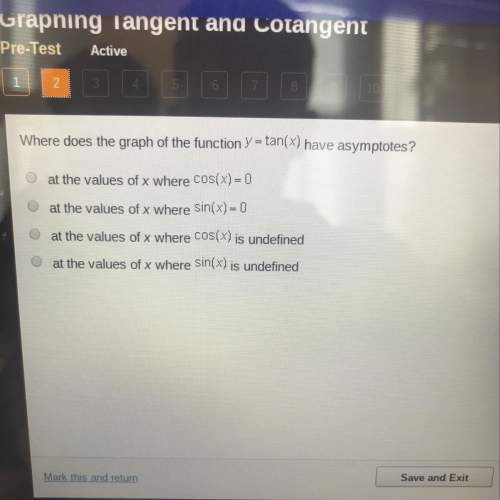
Mathematics, 13.11.2019 18:31, 7thaohstudent
The amount of carbon-14 remaining in an organism, a, is equal to the product of the initial amount of carbon-14 in the organism, a0, and one-half to the power of n, where n is the number of half-lives the organism has experienced. if a frog initially contained 8 grams of carbon-14 and the half-life of carbon-14 is 5,730 years, how much carbon-14 remains in the frog after 11,460 years?

Answers: 2
Other questions on the subject: Mathematics

Mathematics, 21.06.2019 19:00, jackieanguiano3700
Solve the problem. a student earned grades of c, a, b, and a in four different courses. those courses had these corresponding numbers of credit hours: 4, 5, 1, and 5. the grading system assigns quality points to letter grades as follows: a = 4, b = 3, c = 2, d = 1, and f = 0. compute the grade point average (gpa) and round the result to two decimal places. 3.40 3.50 8.75 2.18
Answers: 1

Mathematics, 21.06.2019 20:00, trevorhenyan51
Ahiker stands at an unknown elevation before he ascends 2 miles up a mountain to an elevation of 9 miles. find the elevation of the hiker before his ascent.
Answers: 1

Mathematics, 21.06.2019 21:30, randallcraig27
Two rectangular prisms have the same volume. the area of the base of the blue prism is 418 4 1 8 square units. the area of the base of the red prism is one-half that of the blue prism. which statement is true?
Answers: 3

Mathematics, 21.06.2019 22:20, skyhighozzie
(b) suppose that consolidated power decides to use a level of significance of α = .05, and suppose a random sample of 100 temperature readings is obtained. if the sample mean of the 100 temperature readings is x⎯⎯ = 60.990, test h0 versus ha and determine whether the power plant should be shut down and the cooling system repaired. perform the hypothesis test by using a critical value and a p-value. assume σ = 5. (round your z to 2 decimal places and p-value to 4 decimal places.)
Answers: 2
Do you know the correct answer?
The amount of carbon-14 remaining in an organism, a, is equal to the product of the initial amount o...
Questions in other subjects:








Mathematics, 01.05.2021 02:10









